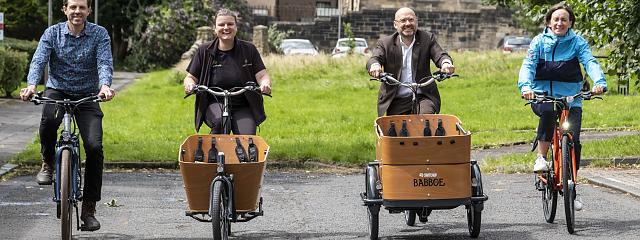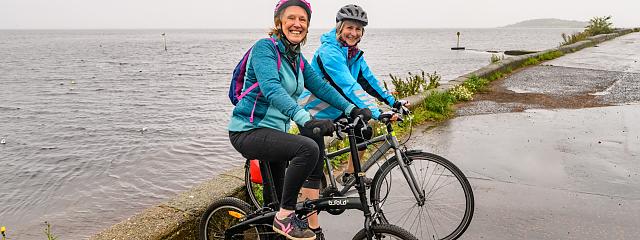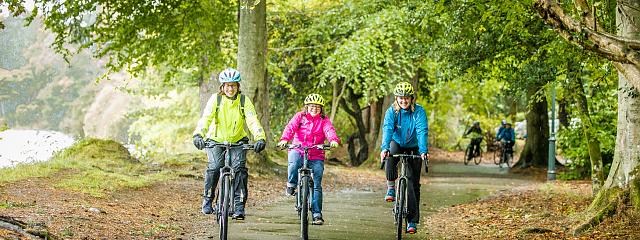
Cycle Share Fund FAQs
Cycle Share Fund FAQs
Grants from the Cycle Share Fund will enable organisations to purchase cycles and equipment for schemes that provide people with access to a bike that they don’t own.
- Who is eligible to apply?
- What kinds of cycles can the fund be used to buy?
- Is match funding required?
- Can the fund be used to buy equipment?
- Will support be provided to assist with managing hires?
- Can the fund be used to buy bikes and equipment for a docked cycle hire scheme?
- Can the fund be used to pay for storage?
- Can the fund be used to pay for revenue costs?
- Can we charge a fee for people to use the bikes?
- How long does the BRM licence last?
- What is the deadline for applying?
- Do we require insurance for the cycles and cycle users?
- Is there a limit to the number of cycles we can buy, or the amount we can apply for?
- Can we use the fund to purchase a variety of cycles (adult, child, non-standard, electric)?
- Can we buy recycled bikes?
- Will you provide advice around bike purchasing (suitable models, reasonable price points and so on)?
- What monitoring and evaluation requirements are attached to the fund?
- Who owns the assets?
1. Who is eligible to apply?
The fund is open to organisations who run or wish to run any form of cycle share scheme. Eligible organisations include third sector and community organisations, charities, schools and other workplaces. We cannot fund individuals and we will only consider granting funds to profit-making organisations if they apply in partnership with a not-for-profit organisation.
2. What kinds of cycles can the fund be used to buy?
Any cycles suitable for short everyday journeys and leisure cycling are eligible, including non-standard cycles, e-cycles and children’s cycles. We will not fund full-suspension mountain bikes, BMX or other bikes that are not practical for everyday journeys.
3. Is match funding required?
No, match funding is not required.
4. Can the fund be used to buy equipment?
Equipment that may be used and loaned alongside the cycles (for example, helmets, lights, locks and bags) may be purchased with the fund.
5. Will support be provided to assist with managing hires?
Yes, Cycling UK has a Bike Rental Manager (BRM) platform and we can provide organisations with a licence to use it.
6. Can the fund be used to buy bikes and equipment for a docked cycle hire scheme?
We will not fund any new docked cycle hire schemes – the timescale of the available funding does not permit it – but we can fund purchases relating to existing docked schemes.
7. Can the fund be used to pay for storage?
If you need to purchase storage to enable you to own and use the cycles, then you may include that cost in your application. You may not use the fund to solely pay for storage.
8. Can the fund be used to pay for revenue costs?
This is a capital fund and, as such, applications should be focused on the procurement of capital assets. However, proposals for complementary activities may be considered where there is a direct link to capital elements, such as bike maintenance costs in conjunction with procurement of bikes.
9. Can we charge a fee for people to use the bikes?
Yes, but profits should be used to support the running of the scheme.
10. How long does the BRM licence last?
It lasts for 12 months and after that time, there is a selection of different plans that you can purchase to continue using it if you wish. If you require more information about this, please do not hesitate to contact us.
11. What is the deadline for applying?
The fund will close either when the funds have all been allocated or on 31 March 2024, whichever occurs soonest.
12. Do we require insurance for the cycles and cycle users?
Yes, it is the responsibility of the grant applicant to provide insurance and Cycling UK may check that organisations have public liability insurance policies in place before awarding funding.
13. Is there a limit to the number of cycles we can buy, or the amount we can apply for?
No, there are no upper or lower limits. However, we expect you to demonstrate feasibility in your application. You should be able to show the need in your community and that you have considered the logistics of storing and maintaining the cycles you are applying to the fund to purchase, as well as providing a convincing plan for managing and monitoring their use.
14. Can we use the fund to purchase a variety of cycles (adult, child, non-standard, electric)?
Yes, you may buy more than one type of cycle.
15. Can we buy recycled bikes?
Yes, you may purchase recycled or secondhand cycles from a reputable retailer. They cannot be bought from Gumtree, eBay or Facebook Marketplace.
16. Will you provide advice around bike purchasing (suitable models, reasonable price points and so on)?
Yes, we have a bike buying guide which provides this information. It is important that you demonstrate in your application that you have an understanding of why particular cycles will meet your needs and that you have, or will have, measures in place to effectively manage a fleet and a cycle share scheme.
17. What monitoring and evaluation requirements are attached to the fund?
We require you to provide us with email addresses and postcodes for everyone who uses the cycles bought through this fund. We will only email them a one-off survey to support the monitoring and evaluation of the Cycle Share Fund; we will not add them to any mailing lists or share their details further.
18. Who owns the assets?
Successful grant applicants will be the sole owners of any cycles purchased using this fund.











